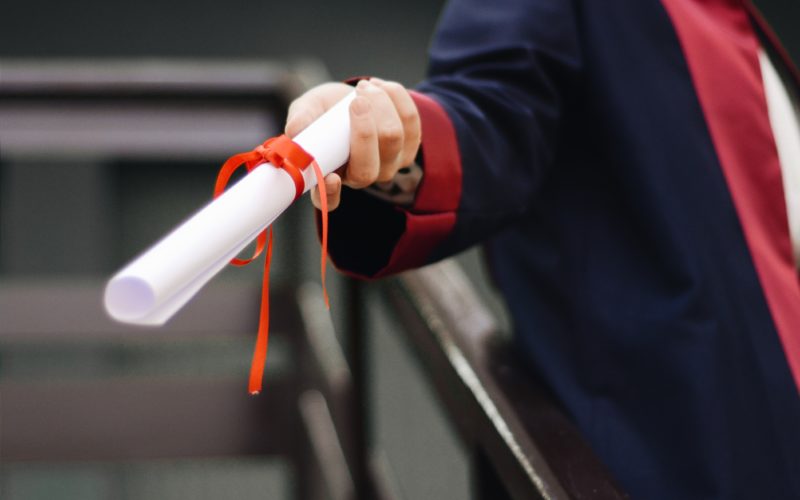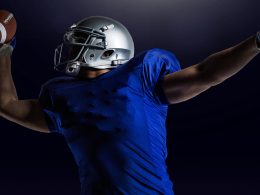The NCAA’s transfer restrictions on student-athletes are a common subject of impassioned debate. Under the former rule, student-athletes who transferred from any institution to an NCAA member school were ineligible to compete until they completed one full academic year at their new school.1[1]N.C.A.A. Rule 14.5.1 (2021) https://web3.ncaa.org/lsdbi/reports/getReport/90008 There were few, limited exceptions. However, on April 31, 2021, the NCAA added a major exception to the rule which allows student-athletes to transfer one time during their five-year eligibility window without having to sit out for an entire academic year.2[2]N.C.A.A. Rule 14.5.5.2.10 (2021) https://web3.ncaa.org/lsdbi/reports/getReport/90008
Two developments in 2021 might now fuel pushback against the NCAA’s transfer rules. First, the Supreme Court in National Collegiate Athletic Association v. Alston held that NCAA collective rules that limit payments to student-athletes violate the antitrust laws.3[3]National Collegiate Athletic Association v. Alston, 141 S. Ct. 2141 (2021) An impassioned concurrence by Justice Kavanaugh further suggested that the entire NCAA regulatory apparatus, e.g., transfer rules, might be vulnerable to antitrust challenge.4[4]Id. Second, states enacted laws that abrogated NCAA prohibitions on student-athletes monetizing their name, image, and likeness (“NIL”) rights. As a result of these developments the percentage of student-athletes who enter the NCAA’s transfer portal could rise at an unprecedented rate. Student-athletes now have a significant economic incentive to transfer to schools that can offer increased playing time, and thus increased exposure to sponsors who have already completed multimillion-dollar endorsement deals with other student-athletes.5[5]Jim Vertuno, Latest NIL Twist: Millions Being Pledged to College Athletes, NBCDFW (2021) https://www.nbcdfw.com/news/sports/latest-nil-twist-millions-being-pledged-to-college-athletes/2838989/ Consequently, the NCAA’s rules governing transfers could become the subject of increased judicial scrutiny. This article briefly discusses how NCAA transfer restrictions on student-athletes might be analyzed under the antitrust laws, particularly Section 1 of the Sherman Act.
I. The NCAA, the Sherman Act, and Horizontal Restraints
Section 1 of the Sherman Act states that every “contract, combination in the form of trust or otherwise, or conspiracy, in restraint of trade or commerce among the several States, is illegal.”6[6]15 U.S.C. §1 The Act proscribes “horizontal restraints on competition”—agreements among competitors on the way they will compete with one another.7[7]Nat’l Collegiate Athletic Ass’n v. Bd. of Regents of Univ. of Oklahoma, 468 U.S. 85 (1984) However, the Supreme Court recognized in Nat’l Collegiate Athletic Ass’n v. Bd. of Regents of Univ. of Oklahoma that horizontal restraints may sometimes be necessary for a product to be available at all.8[8]Id. For example, the NCAA needs its member schools to agree on game-related horizontal restraints, such as the size of a football field or the number of players allowed on the field at any time, for college football to exist.9[9]Id. Thus, horizontal restraints imposed by the NCAA are not categorically illegal under the antitrust laws.10[10]Id.
II. Transfer Restrictions Under a Section 1 Analysis
The courts have repeatedly held that NCAA restraints ought to be assessed under a Rule of Reason analysis, a “fact-specific assessment of market power and market structure aimed at assessing the challenged restraint’s actual effect on competition . . . .”11[11]National Collegiate Athletic Association v. Alston, 141 S. Ct. 2141 (2021) The Rule of Reason analysis is a burden shifting framework that works as follows: (1) the plaintiff bears the initial burden of showing that the restraint produces significant anticompetitive effects within a relevant market; (2) if the plaintiff meets this burden, the defendant must come forward with evidence of the restraint’s procompetitive benefits; (3) the plaintiff must then show that any legitimate objectives can be achieved in a substantially less restrictive manner.12[12]Id. The court will then balance the restraint’s anticompetitive harms against its procompetitive benefits.13[13]O’Bannon v. National Collegiate Athletic Association, 802 F.3d 1049 (9th Cir. 2015)
The Rule of Reason requires a properly defined market as well as an assessment of the defendant’s power within that market.14[14]Ohio v. American Express Co., 138 S.Ct. 2274 (2018) There are many factors that influence a market definition. In a potential Section 1 challenge to the transfer restrictions, the market definition likely would be similar to the market definition adopted by the court in Alston— “student-athlete services wherein each class member participates in his or her sport-specific market.”15[15]National Collegiate Athletic Association v. Alston, 141 S. Ct. 2141 (2021)
After having defined the market, the court would then assess the degree of power that the NCAA has within that market. The court would determine whether the NCAA can profitably charge prices above the competitive level or reduce output for a sustained period, and generally looks for two kinds of market power—monopoly power (where sellers set the market and are able to raise and control prices) and monopsony power (where buyers set the market and are able to raise and control prices). In most antitrust cases brought against the NCAA, the courts have found sufficient market power. For example, in Alston, the NCAA did not contest that it was “capable of depressing wages below competitive levels and restricting the quantity of student-athlete labor” within the market for student-athlete services, and it did not contest that the student athletes had “nowhere else to sell their labor” other than the market in which the NCAA had monopoly power.16[16]Id. It accepted that “its members collectively enjoy[ed] monopsony power in the market for student-athlete services, such that its restraints can (and in fact [did]) harm competition.”17[17]Id.
The NCAA’s best chance at avoiding antitrust liability under a Section 1 Rule of Reason analysis would be to come forward with evidence of the transfer restrictions’ procompetitive benefits. Some well-respected college coaches, such as Ole Miss’s Lane Kiffin, already believe that the transfer restrictions are too lenient and have created de facto “free agency.”18[18]Jacob Camenker, Ole Miss’ Lane Kiffin laments changes brought on by transfer portal: ‘We have free agency in college football,’ SPORTING NEWS (2021) https://www.sportingnews.com/us/ncaa-football/news/ole-miss-lane-kiffin-transfer-portal-college-football/8x224a7zvqi71qu6hgdl87gct The general position adopted by NIL era critics is that the focus of student-athletes has shifted from the on-field competition to off-the-field endorsement opportunities, and that this will consequently decrease the quality of on-field competition. Thus, the NCAA could argue as it did in Board of Regents that these restraints offer the benefit of increasing or ensuring the quality of the product offered.19[19]Nat’l Collegiate Athletic Ass’n v. Bd. of Regents of Univ. of Oklahoma, 468 U.S. 85 (1984) Additionally, it may argue that these transfer restrictions are a response to consumer preference, i.e., that fans prefer to watch more competitive, higher quality intercollegiate athletic competition, and the NCAA is achieving that goal through these restrictions. If the court were to accept these procompetitive justifications, the plaintiff would face the burden of offering legitimate alternatives that could be implemented in place of these restraints which would achieve the same goals.
III. What Lies Ahead?
It is a near certainty that the NCAA will find itself at the center of antitrust scrutiny in the coming years following Alston. As more student-athletes feel that their already limited opportunity to monetize on their NIL rights are restricted by the transfer rules, the likelihood of an antitrust claim being brought under Section 1 of the Sherman Act will increase in lockstep. Just how broad the scope of these claims will be is yet to be seen, but the Supreme Court is already weary of the NCAA’s problematic relationship with the antitrust laws. As Justice Kavanaugh stated in his concurring opinion in Alston, “under ordinary principles of antitrust law, it is not evident why college sports should be any different. The NCAA is not above the law.”20[20]National Collegiate Athletic Association v. Alston, 141 S. Ct. 2141 (2021)
Written by: Matthew Zapata
Matthew is a 2022 J.D. Candidate at Brooklyn Law School
1 N.C.A.A. Rule 14.5.1 (2021) https://web3.ncaa.org/lsdbi/reports/getReport/90008
2 N.C.A.A. Rule 14.5.5.2.10 (2021) https://web3.ncaa.org/lsdbi/reports/getReport/90008
3 National Collegiate Athletic Association v. Alston, 141 S. Ct. 2141 (2021)
4 Id.
5 Jim Vertuno, Latest NIL Twist: Millions Being Pledged to College Athletes, NBCDFW (2021) https://www.nbcdfw.com/news/sports/latest-nil-twist-millions-being-pledged-to-college-athletes/2838989/
6 15 U.S.C. §1
7 Nat’l Collegiate Athletic Ass’n v. Bd. of Regents of Univ. of Oklahoma, 468 U.S. 85 (1984)
8 Id.
9 Id.
10 Id.
11 National Collegiate Athletic Association v. Alston, 141 S. Ct. 2141 (2021)
12 Id.
13 O’Bannon v. National Collegiate Athletic Association, 802 F.3d 1049 (9th Cir. 2015)
14 Ohio v. American Express Co., 138 S.Ct. 2274 (2018)
15 National Collegiate Athletic Association v. Alston, 141 S. Ct. 2141 (2021)
16 Id.
17 Id.
18 Jacob Camenker, Ole Miss’ Lane Kiffin laments changes brought on by transfer portal: ‘We have free agency in college football,’ SPORTING NEWS (2021) https://www.sportingnews.com/us/ncaa-football/news/ole-miss-lane-kiffin-transfer-portal-college-football/8x224a7zvqi71qu6hgdl87gct
19 Nat’l Collegiate Athletic Ass’n v. Bd. of Regents of Univ. of Oklahoma, 468 U.S. 85 (1984)
20 National Collegiate Athletic Association v. Alston, 141 S. Ct. 2141 (2021)




